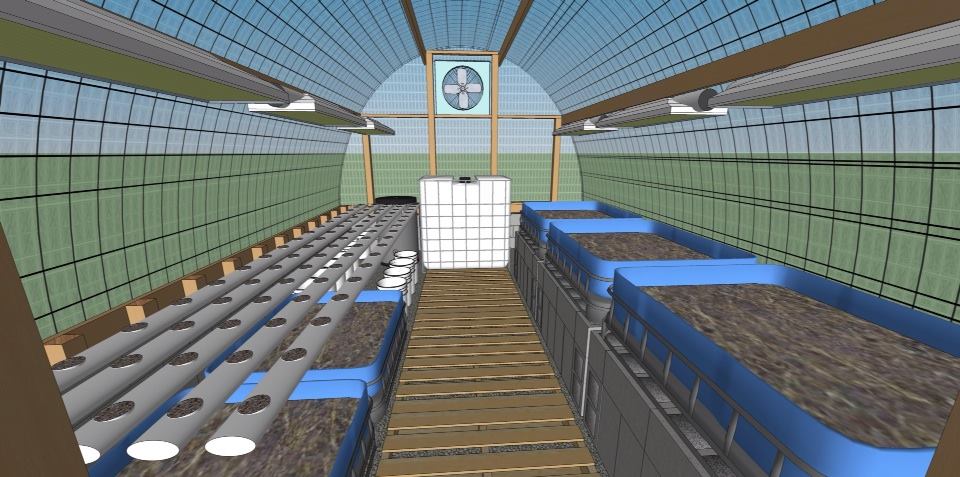Category:Holistic Aquaponics Greenhouse Toolkit
Open Source Holistic Aquaponics Greenhouse Toolkit
System Theory Flowmap:File:Holistic Aquaponics Greenhouse System Map.odg
Current Supply List: [1]
Design Rationale: The purpose of this toolkit is to open source various technologies, some commonly used, others less frequently, for use in creating composites of these technologies in order to create custom design greenhouse for custom design specifications from a modular set of technologies and techniques, for the purpose of taking inputs from a wide variety of biomass, and to convert it efficiently into bioavailable forms to create a holistic food web, primarily based on spirulina and other superfoods as a basis for creating a healthy, nutrient-filled foods in a concentrated space using a large portion of the waste cycles of outdoor agriculture and humans.
Each greenhouse constructed by this protocol will be a composite of technologies to meet these universal guidelines in a wide variety of environments, with the exception of the first couple iterations for proof of concept:
- Techniques based on Good Agricultural Practices and criteria based on the USDA regulations on organic certification protocols such as Oregon Tilth and California Certified Organic Farmers (CCOF).
- Maintain large volumes of water in a temperature range between 70-89 degrees Fahrenheit regardless of outside climatic conditions through robust passive and active climate control measures, with particular emphasis on albedo and thermal mass management for the purpose of optimizing an environment that maximizes the growth rate of spirulina[2], which serves as the basis of a food web that ultimately provides for all the nutrition needs of Integrated Humans.
- Utilizes robust sensor technologies to ensure that the system maintains the optimal state for growth and minimize the risk of catastrophic failure while minimizing the need for human monitoring and maintenance.
- Locally and sustainably sourced where possible. E.G. Instead of 55 gallon drums, CEB Water Cisterns should be used. Instead of plastic nutrient film technique channels and plastic rafts, CEB channels and wooden rafts should be used.
- Maximize thermal mass- this goes hand-in-hand with CEB construction of aquaducts and other fixtures.
Pages in category "Holistic Aquaponics Greenhouse Toolkit"
The following 9 pages are in this category, out of 9 total.
